This year, vaunted Quail Hollow Club in Charlotte, N.C., added the 2025 PGA Championship to the impressive collection of tournaments held at the club. Now, simply because a golf course hosts a major championship doesn’t make it great, but it does contribute to its lore and to the enticement factor of folks wanting to play it, if only to walk in those famous footsteps. Quail Hollow isn’t alone in The Tar Heel State for combining compelling design with tournament history.
By blending just two factors, the quality of the course design and its significance as a tournament host—with precedence given to major championships, PGA and LPGA Tour events, USGA National Championships, and the prominence of the winners—here are the 10 best historic tournament courses in North Carolina.
10. [TIE] Forest Oaks Country Club—Greensboro
Designed by Donald Ross protégé Ellis Maples in 1962, Forest Oaks tested the Tour’s best from 1977 through 2007, when champions included Hall-of-Famers Seve Ballesteros, Raymond Floyd, and Lanny Wadkins. Major winners Sandy Lyle and Davis Love III both won twice here, and 2026 U.S. Presidents Cup Captain Brandt Snedeker was the final winner. Tall pines, brilliant dogwoods in the spring, well-bunkered greens, and 7,200 hilly yards are highlights of Forest Oaks. While the PGA Tour event was still in full flower, former UNC Tar Heel Love and his Love Golf Design team arrived in 2002 for a fairly extensive renovation. He expanded and recontoured greens, reworked bunkers, and enhanced the drainage and irrigation. In doing so, he injected more variety into what had been a handsome, if repetitive straightforward challenge that inevitably shone brightest in his traditional April tournament week, just ahead of the Masters.
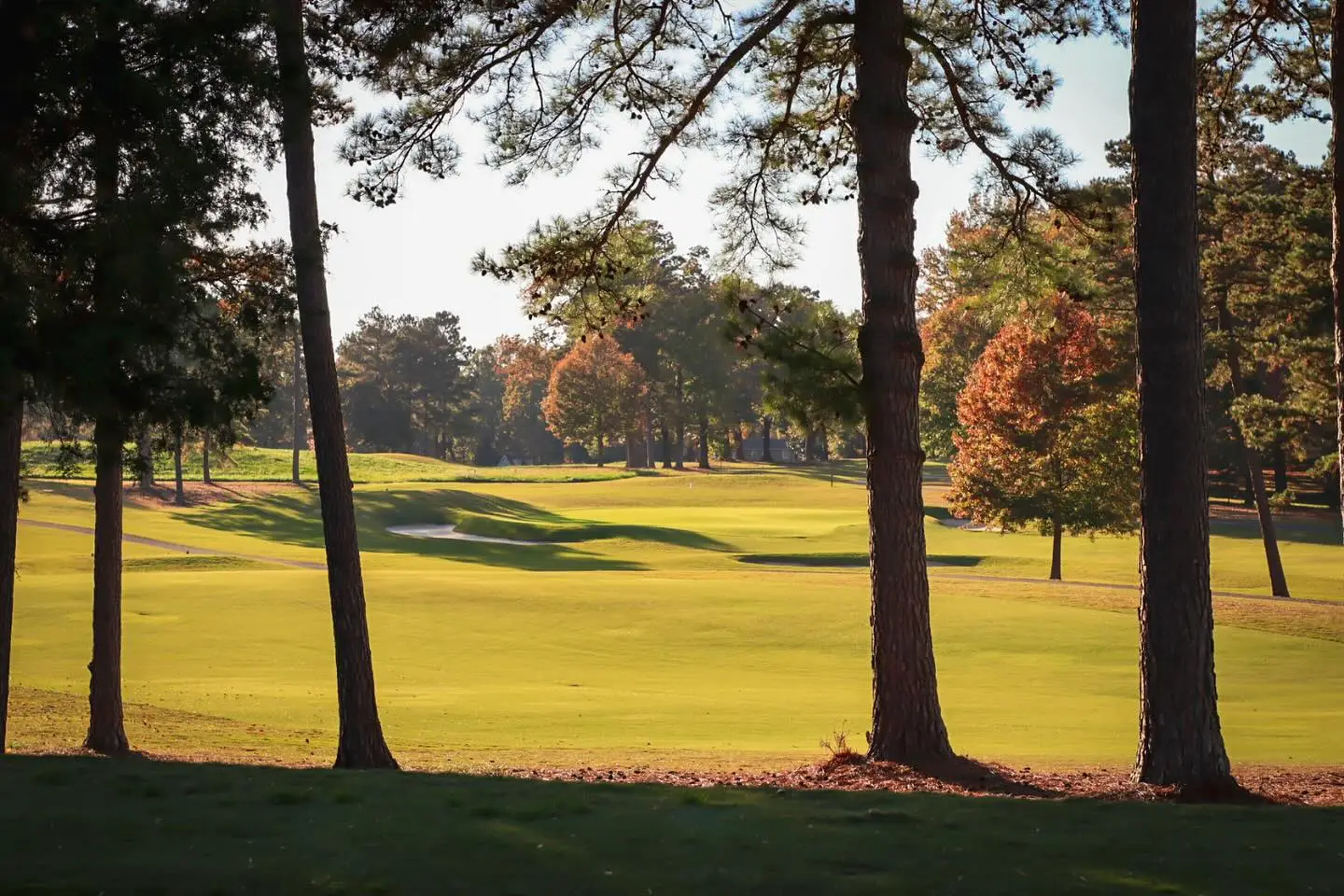
10. [TIE] Raleigh Country Club—Raleigh
Perhaps best known in architecture circles as Donald Ross’s final original design (1948), Raleigh is draped on heavily rolling terrain, with multiple holes incorporating steep ridges and valleys. A strong set of par threes, dense rough, and a stellar set of greens provides much of the challenge, along with one of the state’s best closers, the 498-yard par-four 18th, where cunningly placed fairway bunkers and the prospect of an uneven stance on the approach can thwart par-seekers. Following a successful Richard Mandell renovation two decades ago, the club turned to Kyle Franz in 2020 to restore even more Ross traits to the layout, in addition to lengthening the course to 7,394 yards, par 71. Raleigh has entertained the talented up-and-comers on the Korn Ferry Tour since 2023. For those who like to follow in Hall-of-Fame footsteps, it’s the LPGA Tour that makes that happen. From 1966–74, the American Defender Classic took place here, with Carol Mann and Kathy Whitworth winning three times each and Sandra Haynie and Judy Rankin once. Even the event’s final winner, Jo Ann Prentice, had come off a win at the Colgate Dinah Shore Winner’s Circle three weeks prior.
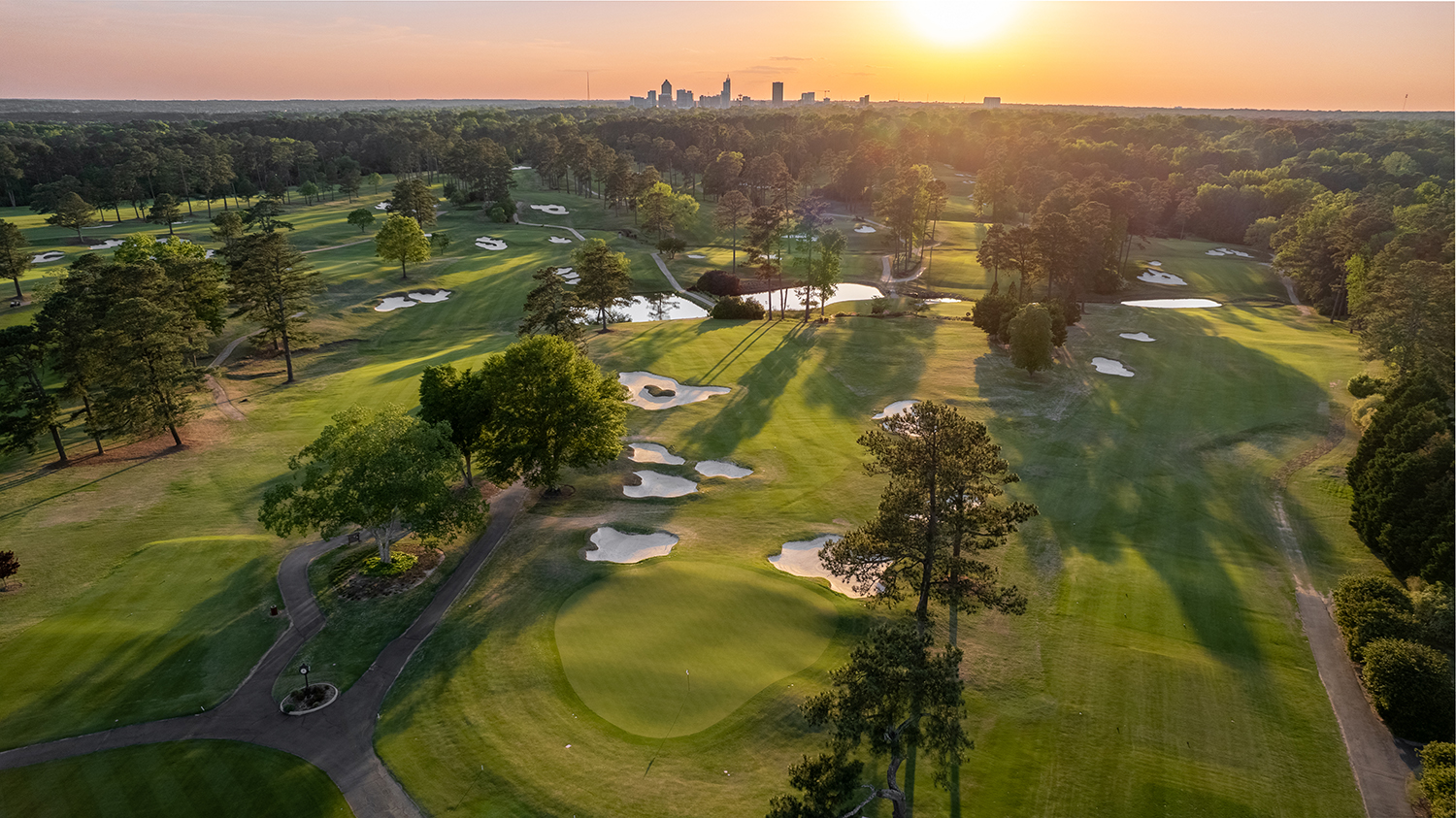
9. Cape Fear Country Club—Wilmington
The oldest private country club in North Carolina, dating to 1896, Cape Fear came into its own in the 1920s when Donald Ross added seven new holes and redesigned the others. Cape Fear, which rolls over delightfully undulating, moderately treed terrain, popped onto the national map in 1945, when it began hosting the PGA Tour’s Azalea Open. The tournament continued annually from 1949–71, and winners included Arnold Palmer in 1957, along with other major champions Lloyd Mangrum (1951), Art Wall Jr. in his Masters-winning year of 1959, Dave Marr in 1962, and Jerry Barber, the 1961 PGA Championship winner, who won three Azaleas, in 1953, 1961, and 1963. A fistful of renovations took place over a 20-year period from 1986–2006, but it took a 2019 Andrew Green restoration to transform the design to what Donald Ross had intended, with Green returning putting surfaces, bunkers, and ground game options to the Ross style.
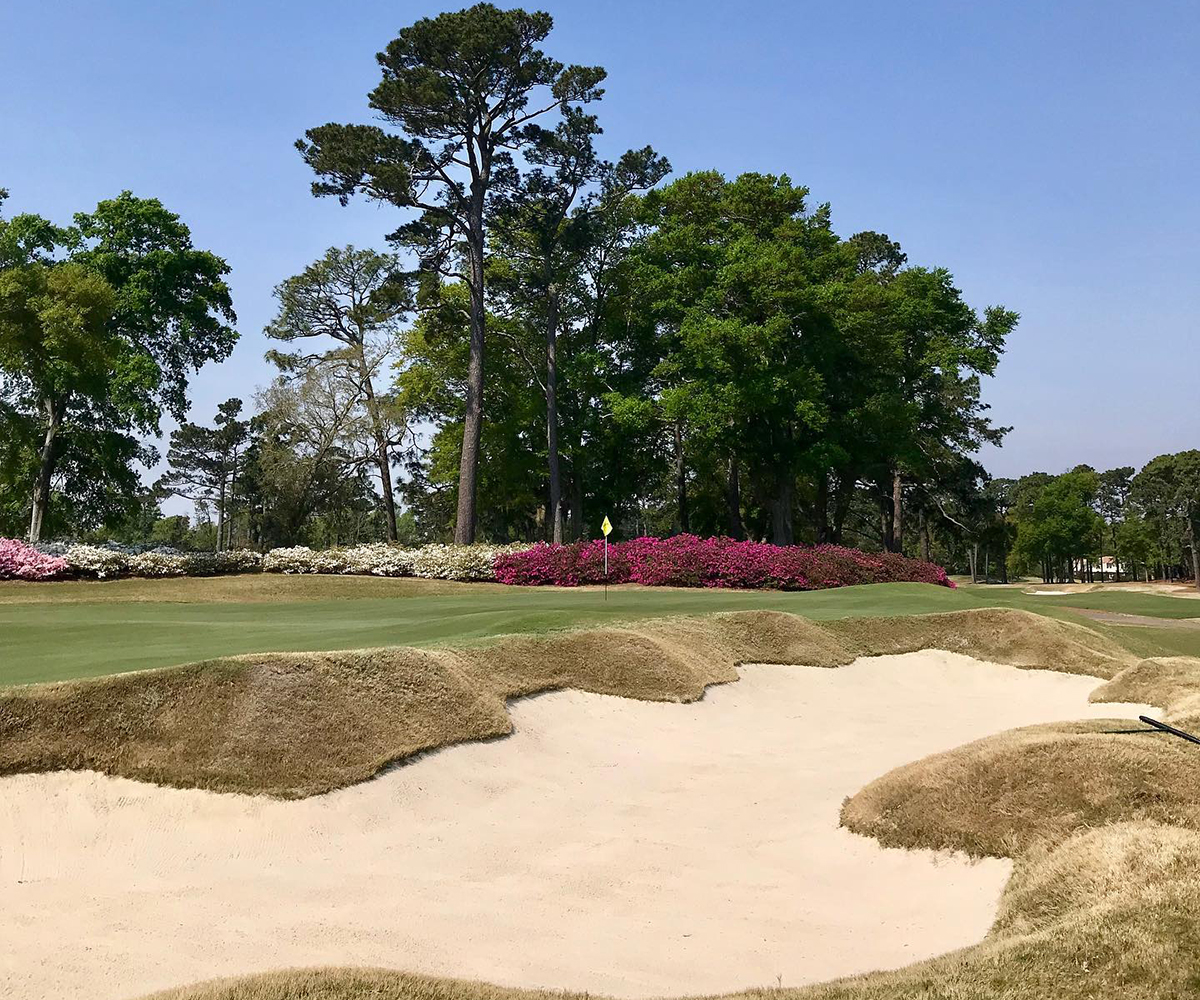
8. Country Club of North Carolina (Dogwood)—Pinehurst
Ellis Maples, whose father Frank served as construction superintendent for Donald Ross, designed the Dogwood course at CCNC in 1963, with an assist from land planner extraordinaire Willard Byrd. Befitting the post-WWII style, the brawny, roomy layout extended well over 7,000 yards and featured tall pines and vast lakes, including Watson Lake, which forms the primary hazard at the course’s most celebrated hole, the over-the-water, 238-yard par-three 16th. In 1980, Hal Sutton dominated the U.S. Amateur at match-play like no one since Bobby Jones. With more than a dozen future PGA Tour pros in the match-play field, including medalist Fred Couples and defending champ Mark O’Meara, Sutton was impressive all week, culminating in a 9 and 8 victory over Bob Lewis. The club also hosted the 2010 Girls’ Junior and the 2021 Junior Amateur, when Nick Dunlap took the title. Long forgotten was the club’s hosting of the PGA Tour’s U.S. Professional Match Play Championship, which it did twice, in 1971 and 1972. In the latter year, Jack Nicklaus nipped Frank Beard in the final, 2 and 1. Most recently, the course was renovated by Kris Spence in 2016.
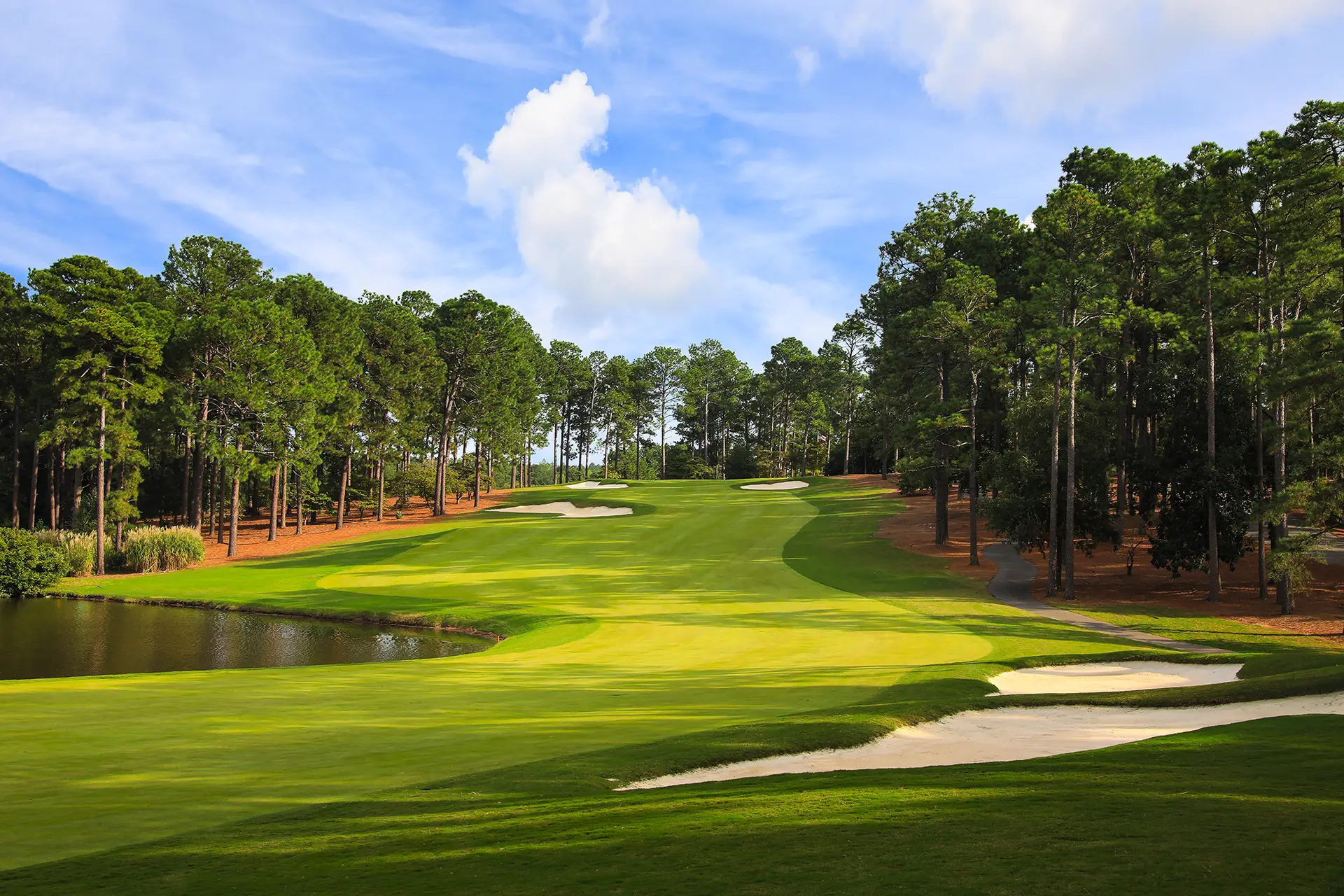
7. Tanglewood Park (Championship)—Clemmons
This abundantly trapped, 1957 Robert Trent Jones Sr. design sits eight miles west of Winston-Salem in the heart of tobacco country. Lee Trevino smoked the field to win the 1974 PGA Championship, easing past Jack Nicklaus and a 62-year-old named Sam Snead. Trevino, Gary Player, and Hale Irwin were among those who captured Senior Tour titles here between 1987 and 2002. On the amateur side, Tanglewood was home to the 1986 Amateur Public Links, when Arizona State All-American Billy Mayfair triumphed. In 2018, Trent Jones’s son, Bobby, collaborated with architect Richard Mandell to improve playability. They did so by redesigning bunkers, converting the greens from bentgrass to Champion Bermuda, and adding emphasis on angles and strategic options.
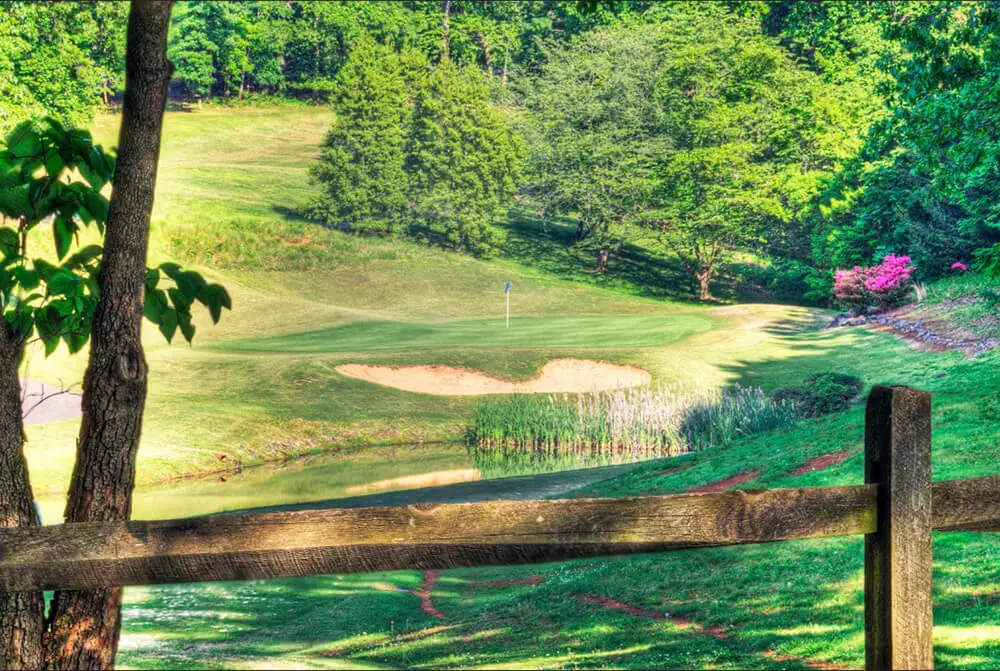
6. Starmount Forest Country Club—Greensboro
The only North Carolina design from underrated Golden Age greats Wayne Styles and John Van Kleek, who worked primarily in New England, Starmount opened on August 1, 1930, with a par-71 layout of 6,630 yards. With its length, creek- and dogleg-fueled challenge, and proximity to downtown Greensboro, Starmount Forest made for an ideal choice for early tournaments. Starmount co-hosted the first four Greater Greensboro Opens, from 1938–41, and played host on its own on a dozen other occasions. Sam Snead won four of his eight titles outright at Starmount, including the final time the club hosted in 1960, and earned one other win when the club co-hosted with Sedgefield. Ben Hogan, Byron Nelson, Bob Goalby, and Dow Finsterwald were other major champions that also triumphed at Starmount. Another golf history bonus was the club’s hosting of the second U.S. Women’s Open in 1947, the first to be contested at stroke play, when Betty Jameson emerged victorious. Following a 1999 renovation by Lester George, the course closed in early 2025 for a comprehensive Kris Spence re-do that will bring it back to its early 1930s look and playability.
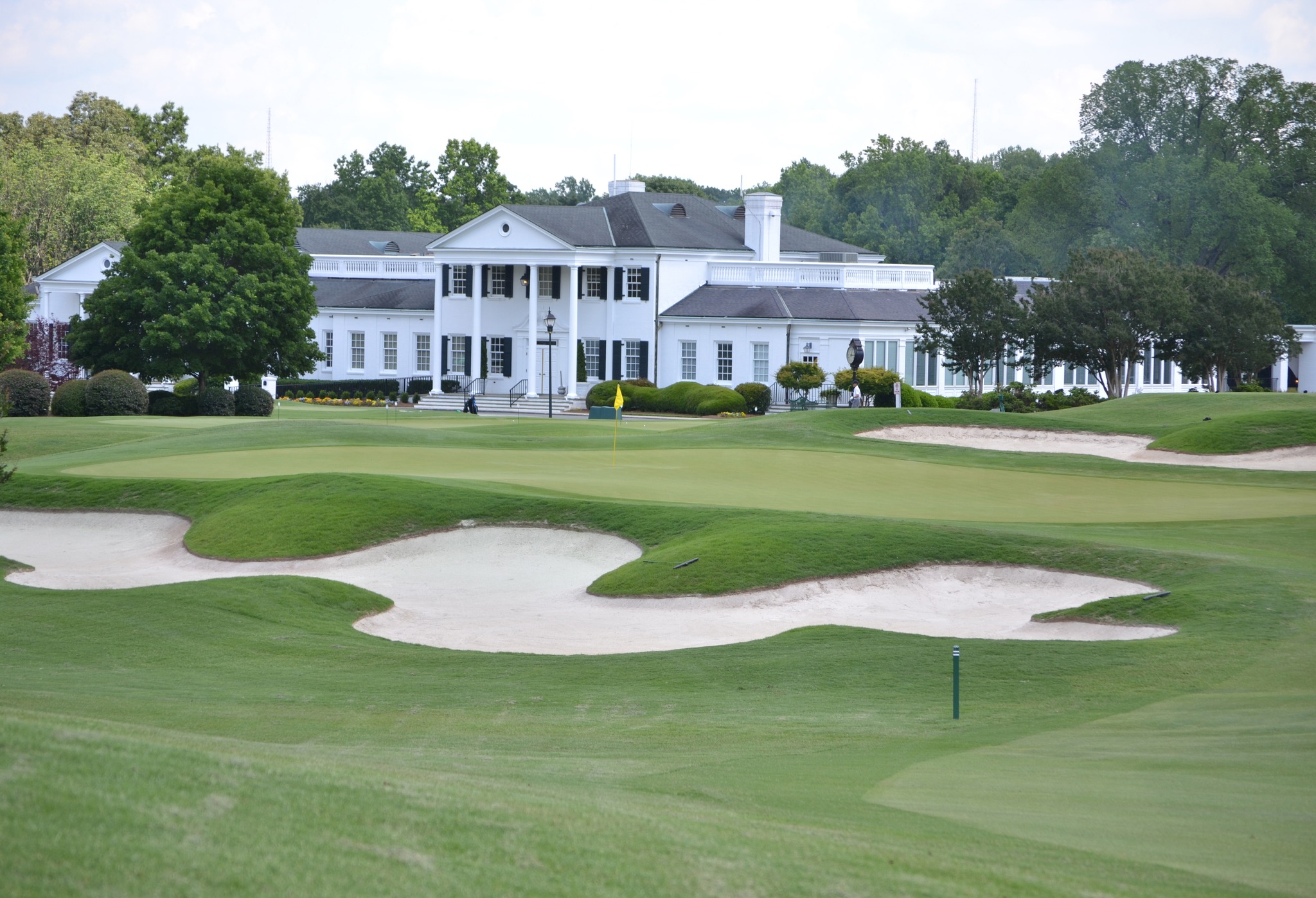
5. Charlotte Country Club—Charlotte
Donald Ross didn’t design this venerable venue from scratch; rather, his work was a 9-hole addition in 1915, a redesign in 1925 when he converted the sand putting surfaces to grass, and a further renovation in 1942. Unfortunately, a lot of the Ross character was lost in the 1960s, when Robert Trent Jones Sr. performed a comprehensive makeover, in part to accommodate a new practice range. Architect Brian Silva brought back some of the Ross traits in the late 1990s, by rolling the turf down onto concave bunkers and finally, in 2007, Ron Prichard effected a sympathetic restoration. Now measuring a sturdy 7,335 yards, with a 75.9 rating and a 146 slope, Charlotte has played host to four USGA National Championships, including the 1972 U.S. Amateur, then held at stroke play, and won by Vinny Giles over Ben Crenshaw and Mark Hayes. It also hosted the 2000 Senior Amateur, the 2010 Women’s Amateur when Danielle Kang memorably bested Jessica Korda 2 and 1, and the 2018 Mid-Amateur. Andrew Green has been assigned as the next architect to renovate/restore CCC.
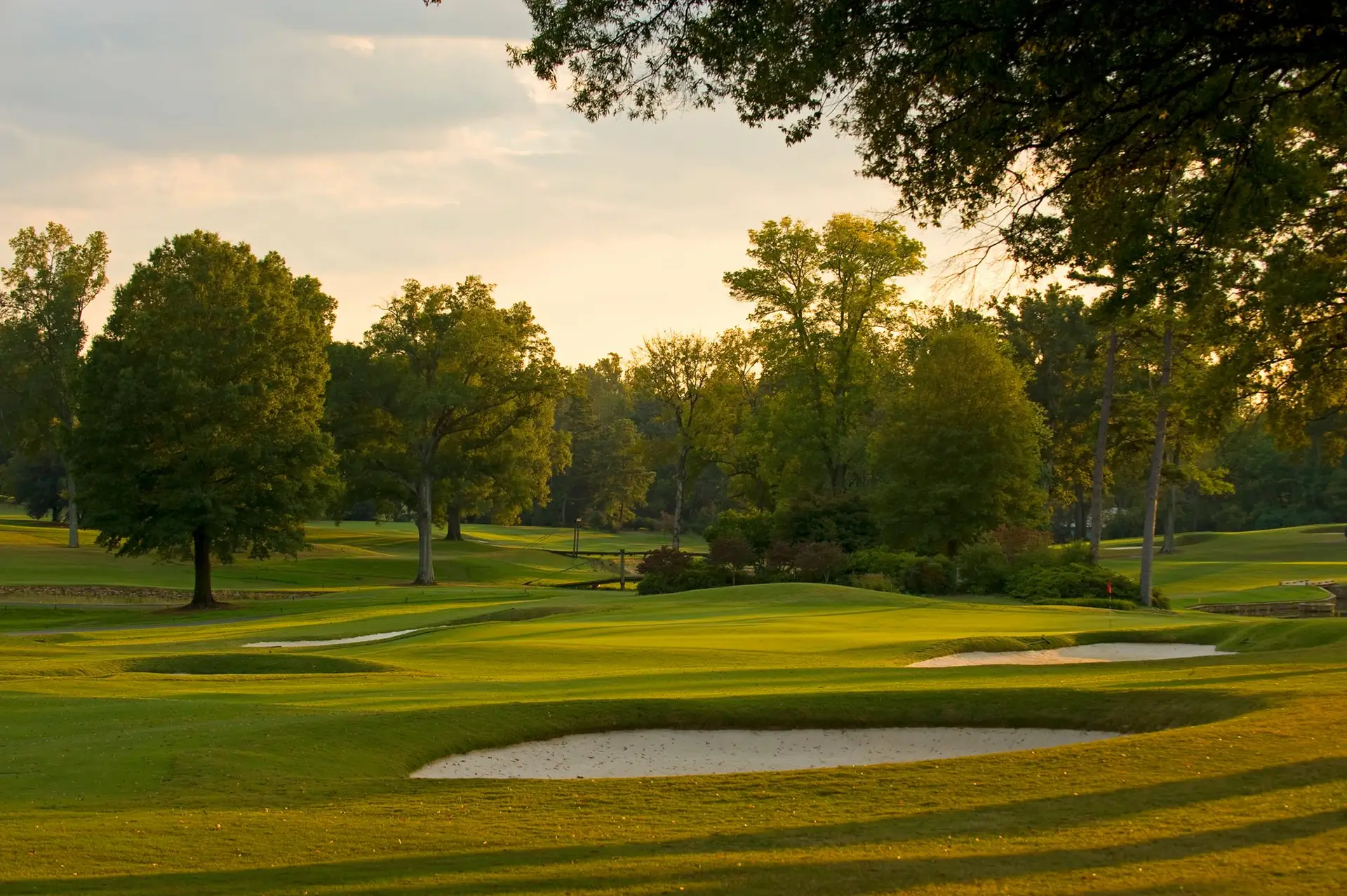
4. Sedgefield Country Club—Greensboro
Sedgefield may never have hosted a USGA national championship, but for PGA Tour lore—Wow! The 1926 Donald Ross design first played host to the Greater Greensboro Open (now the Wyndham Championship) in the event’s inaugural year, 1938, when it shared hosting duties with Starmount Forest. The winner that year? The immortal Sam Snead, who would go on to a record eight victories in the tournament, the final one at Sedgefield in 1965, at age 52. Sedgefield hosted the GGO 26 times between 1938 and 1976, where champions included legends Ben Hogan, Byron Nelson, Billy Casper, and Gary Player. Starting in 2008, Sedgefield resumed hosting duties and among the major winners who have hoisted the trophy are Webb Simpson, Sergio Garcia, Patrick Reed, Davis Love III, Henrik Stenson, and Lucas Glover. Sedgefield struggles to keep today’s players from taking it deep into red figures, but that’s primarily due to its August dates, when high heat and humidity make for soft conditions. Ross’s design is hillier than many of his others, with Old World, lay-of-the-land holes the toughest and the best, such as the tricky, hazard-laced par-five 15th and the par-four 18th (a par five for members), which calls for a long uphill approach from a downhill lie.
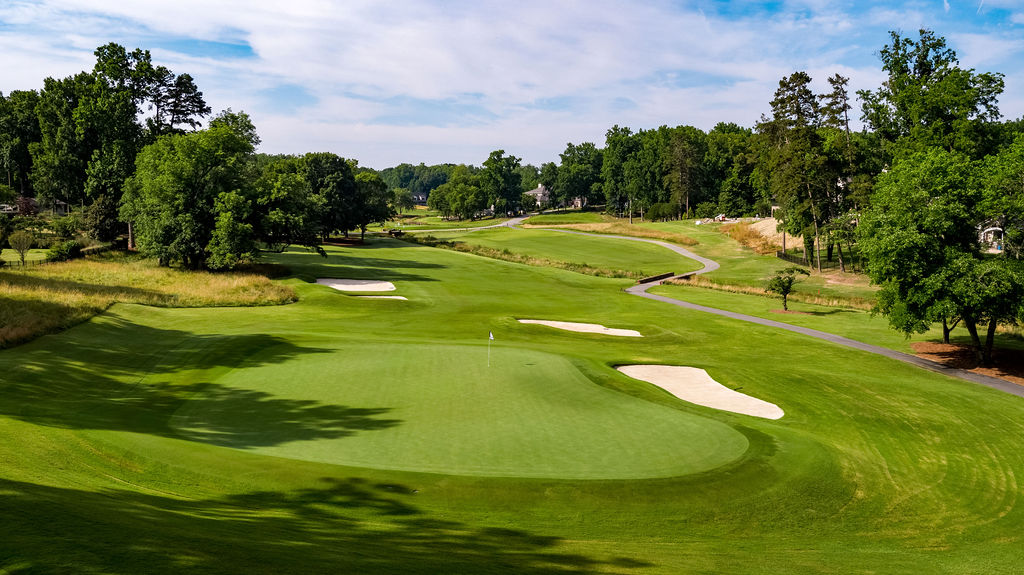
3. Pine Needles Lodge & Golf Club—Southern Pines
This 1927 Donald Ross creation sits just three miles away from Pinehurst No. 2 yet has a different flavor. It isn’t as relentless a test as No. 2, making it a real treat for 15-handicappers, yet its crowned greens have not only beguiled the game’s best women—at the 1996, 2001, 2007, and 2022 U.S. Women’s Opens—they’ve produced superior champions: Annika Sorenstam, Karrie Webb, Cristie Kerr, and Minjee Lee, respectively. With fairways bracketed by mature pines, Pine Needles springs out of the blocks with great holes. The 481-yard par-four 2nd features a drive to a plateau fairway, followed by a downhill approach to a green that slopes maddeningly away, while the 145-yard par-three 3rd plunges downhill to a back-to-front tilted green that’s framed by pines, dogwoods, and azaleas. Co-owned for years by LPGA pioneer Peggy Kirk Bell, Pine Needles also played host to many other high-profile women’s events, including the 1989 U.S. Girls’ Junior, won by Brandie Burton; the 1991 Senior Women’s Amateur, where five-time Curtis Cup competitor Phyllis Preuss triumphed; and the 2019 Senior Women’s Open, when Sweden’s Helen Alfredsson edged Juli Inkster and Trish Johnson.

2. Quail Hollow Club—Charlotte
A mainstay on the PGA Tour since 1969 (Kemper Open host 1969–79; Wachovia/Wells Fargo/Truist host since 2003), Quail Hollow’s fortunes soared following a series of Tom Fazio renovations that began in 1997, culminating in two new holes in time to host the 2017 PGA Championship, won by Justin Thomas. Among the marquee names that have triumphed here are Tiger Woods, Tom Weiskopf (three times), and the King of Quail Hollow, Rory McIlroy, with four wins. Fazio effected more tweaks ahead of the 2022 Presidents Cup, when Jordan Spieth’s 5–0–0 record was the difference in the U.S. downing the Internationals 17.5–12.5. The changes fit seamlessly into the rolling terrain that’s framed by hardwoods and crisscrossed by lakes and creeks. Renowned for its stern, gorgeous trio of closing holes, dubbed the “Green Mile,” Quail Hollow’s creek-slashed par-four 18th may well be the toughest finishing hole in tournament golf.

1. Pinehurst Resort (No. 2)—Pinehurst
Donald Ross’s 1907 chef d’oeuvre rolls gently and spaciously through tall Longleaf pines, with holes culminating in the legendary “inverted saucer” greens that have confounded the game’s very best since they were first grassed in 1935. For the 2014 U.S. Open, a Coore & Crenshaw restoration brought back the tawny-edged fairways and native roughs last seen in the 1940s. Number 2 towers above all other Carolina courses for legendary tournament lore, hosting the PGA Championship in 1936, the Ryder Cup in 1951, and four U.S. Opens—1999 with Payne Stewart’s dramatic victory, 2005, 2014, and 2024, when Bryson DeChambeau snatched the trophy from Rory McIlroy’s grasp.
Yet, that’s only part of the Pinehurst No. 2 tournament parade. Michelle Wie captured a hugely popular U.S. Women’s Open on No. 2 in 2014, and the course played host to dozens of PGA Tour events, from the North & South Open, where winners included Walter Hagen, Ben Hogan, Byron Nelson, and Sam Snead, to the World Open and Hall of Fame Classic (1973–82), where Johnny Miller, Jack Nicklaus, Raymond Floyd, Hale Irwin, and Tom Watson were among the Hall of Famers who lifted hardware. Not to be forgotten are two Tour Championships (Craig Stadler in 1991, Paul Azinger in 1992), the 1994 U.S. Senior Open, three U.S. Amateurs, and the 1989 U.S. Women’s Amateur when Vickie Goetz beat Brandie Burton. Pinehurst is on the schedule to host four future U.S. Open Championships (2029, 2035, 2041, 2047) and will again pull double-duty by hosting the U.S. Women’s Open in 2029.
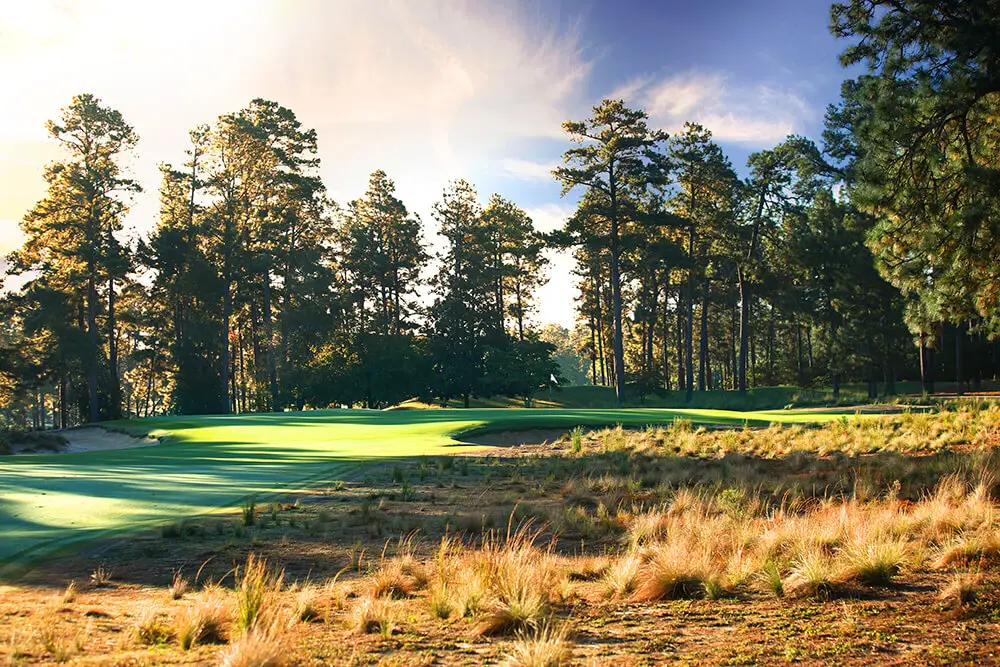


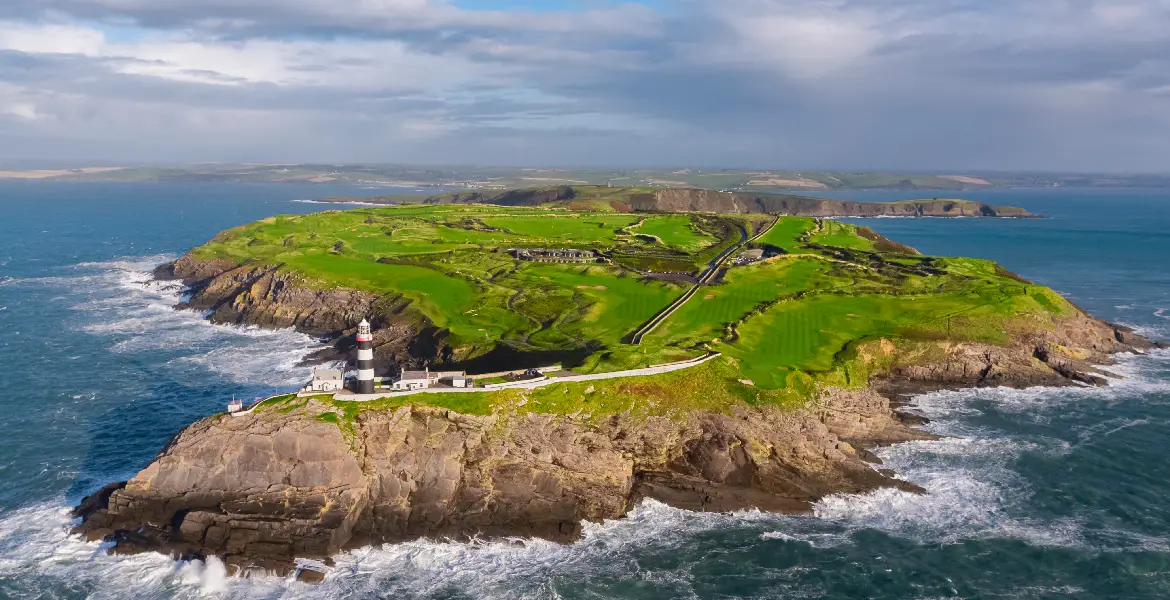
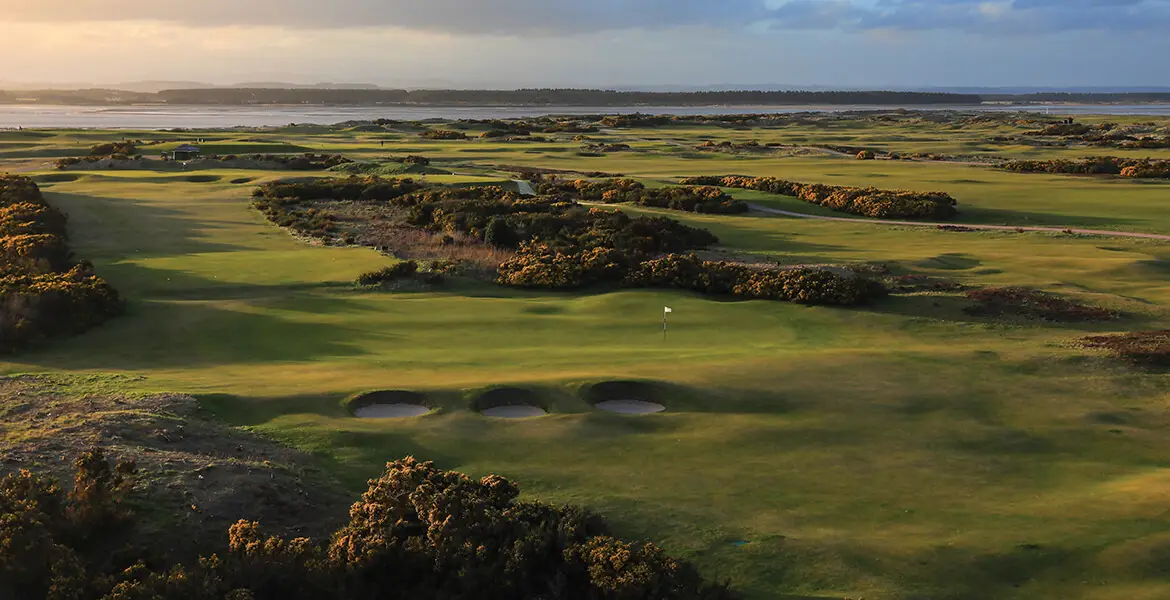

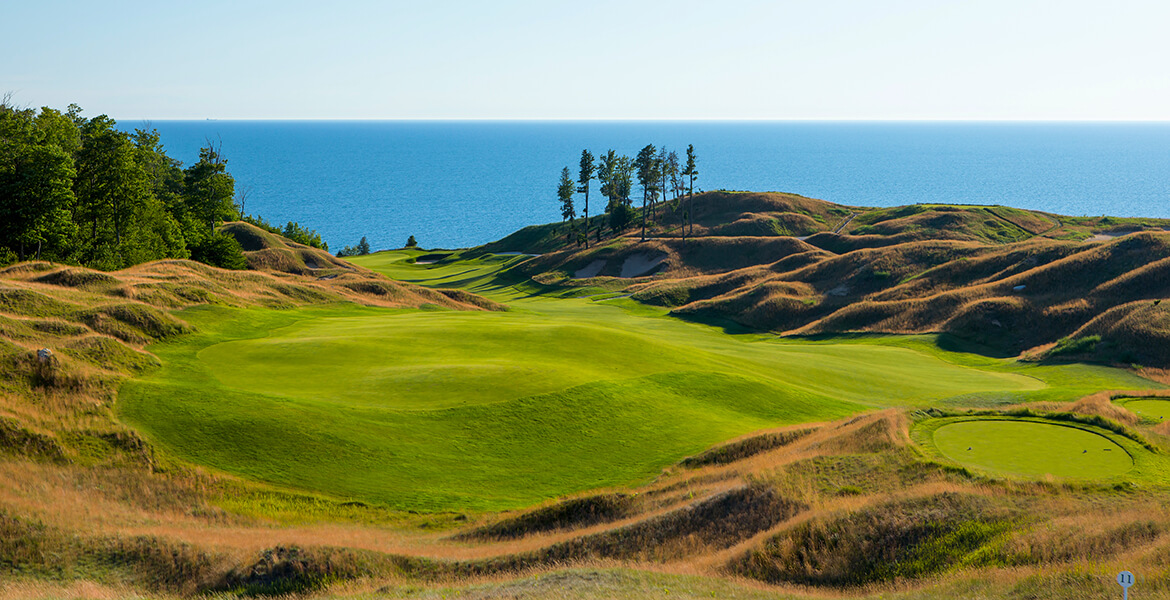
While it may have never hosted a major tournament, Mid Pines, across the street from Pine Needles certainly should host an event. While not particularly long, don’t let that fool you. This Donald Ross masterpiece is every bit as challenging as it’s across the street neighbor. They do host a major Hickory Golf tournament every November that draws entries from all over the country and Canada.
How could you not include Eagle Pointe Golf Club who has hosted Wells Fargo
Previously.